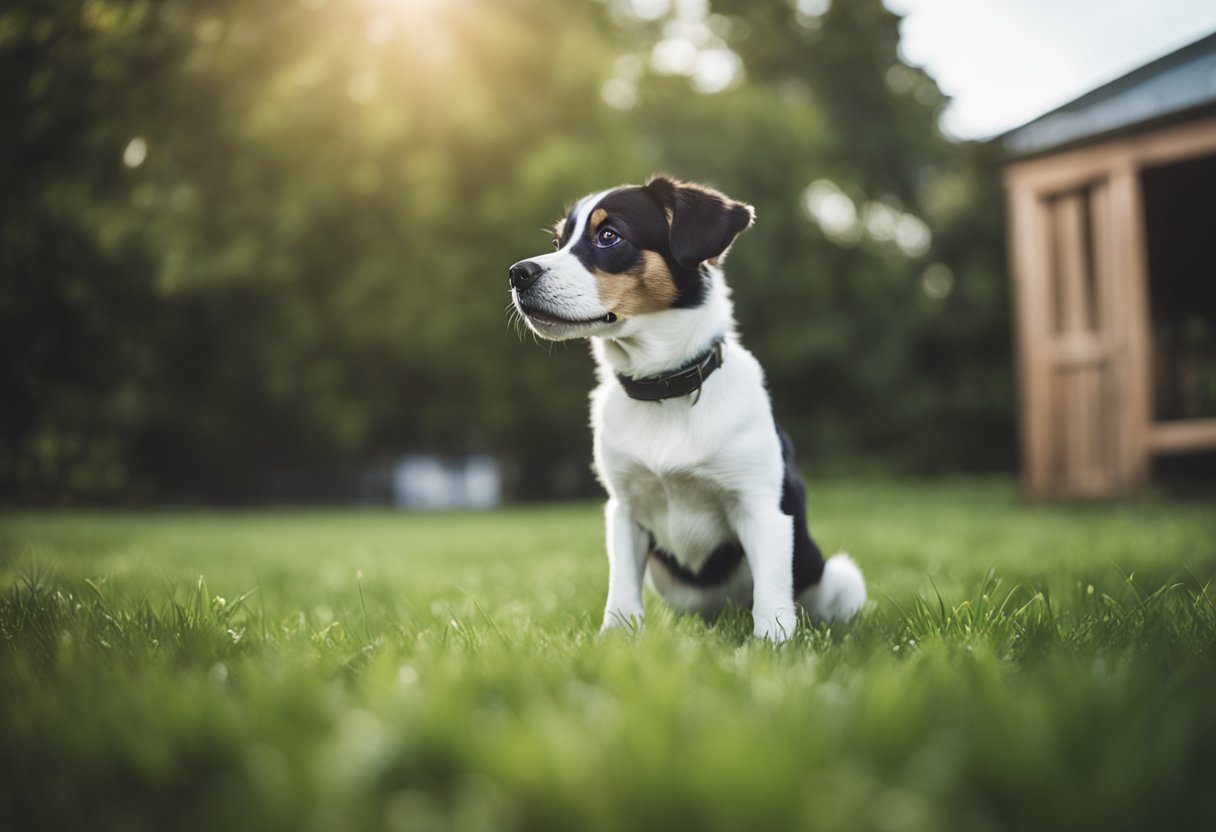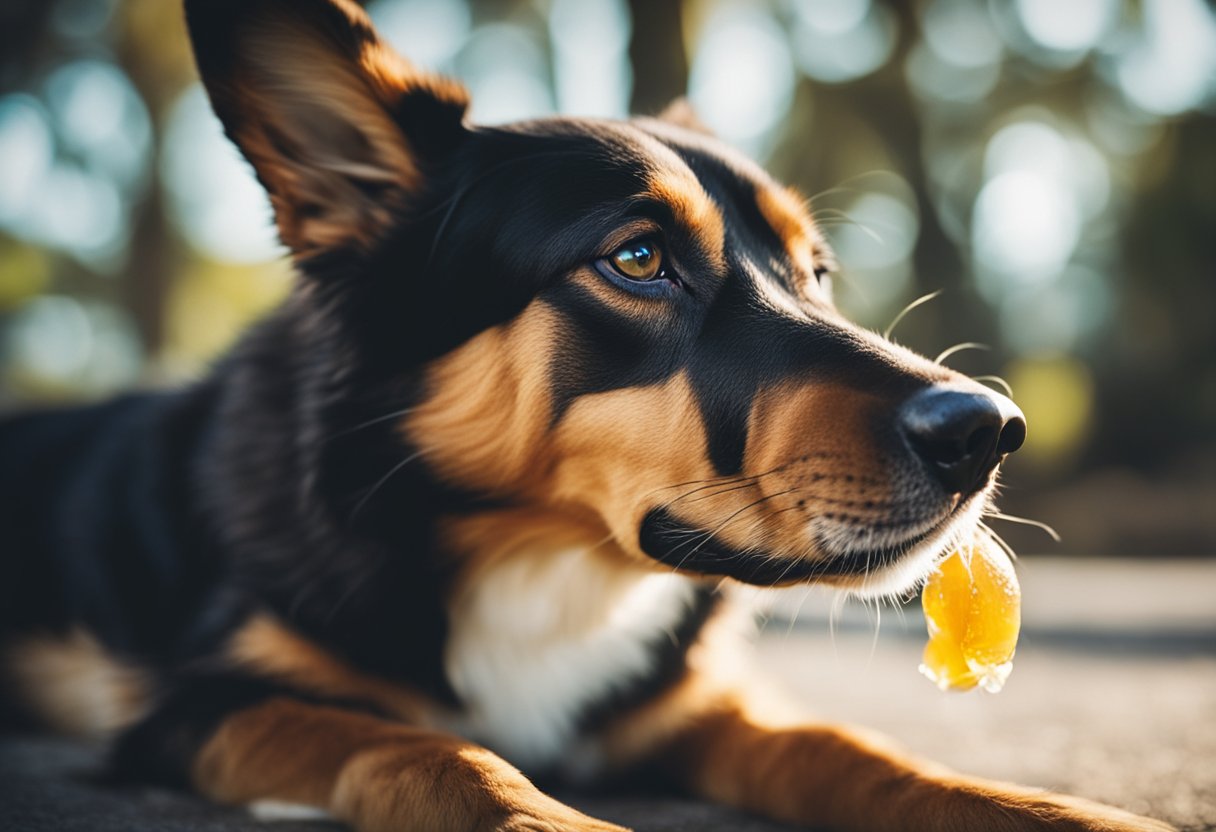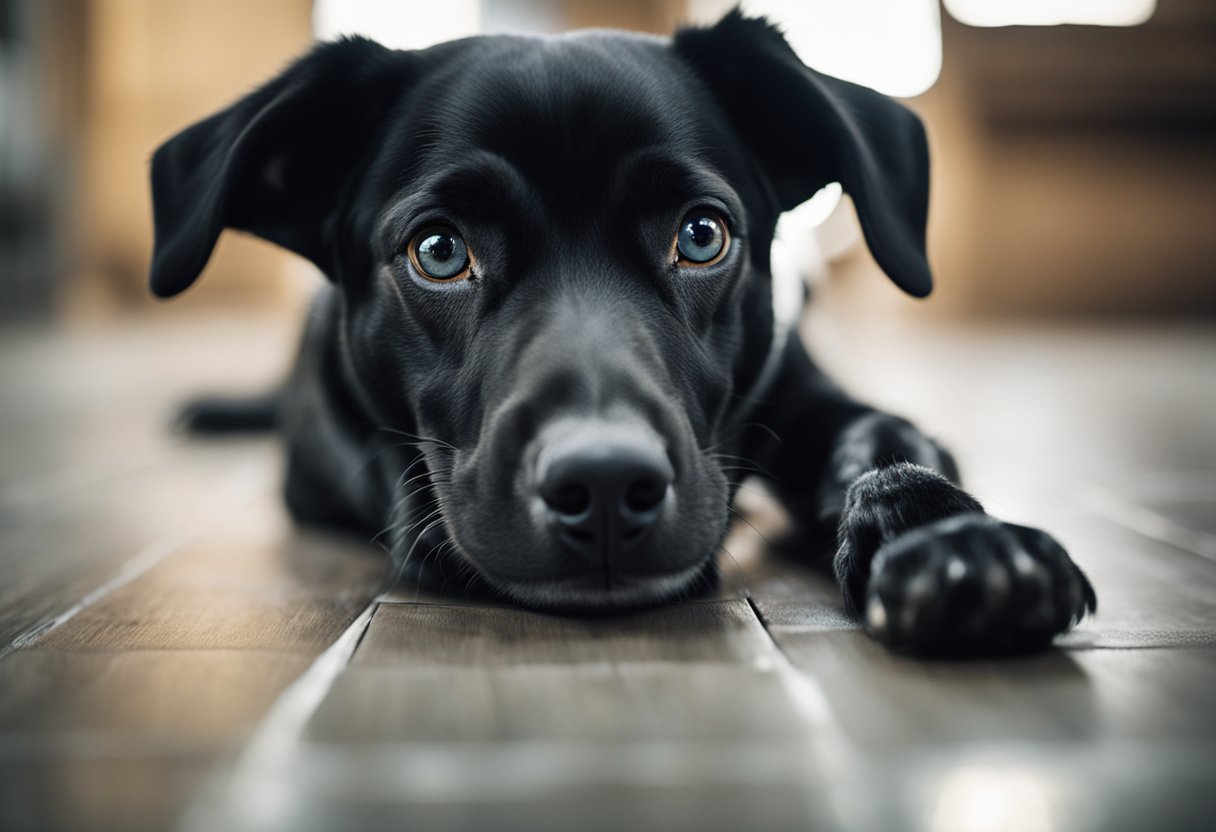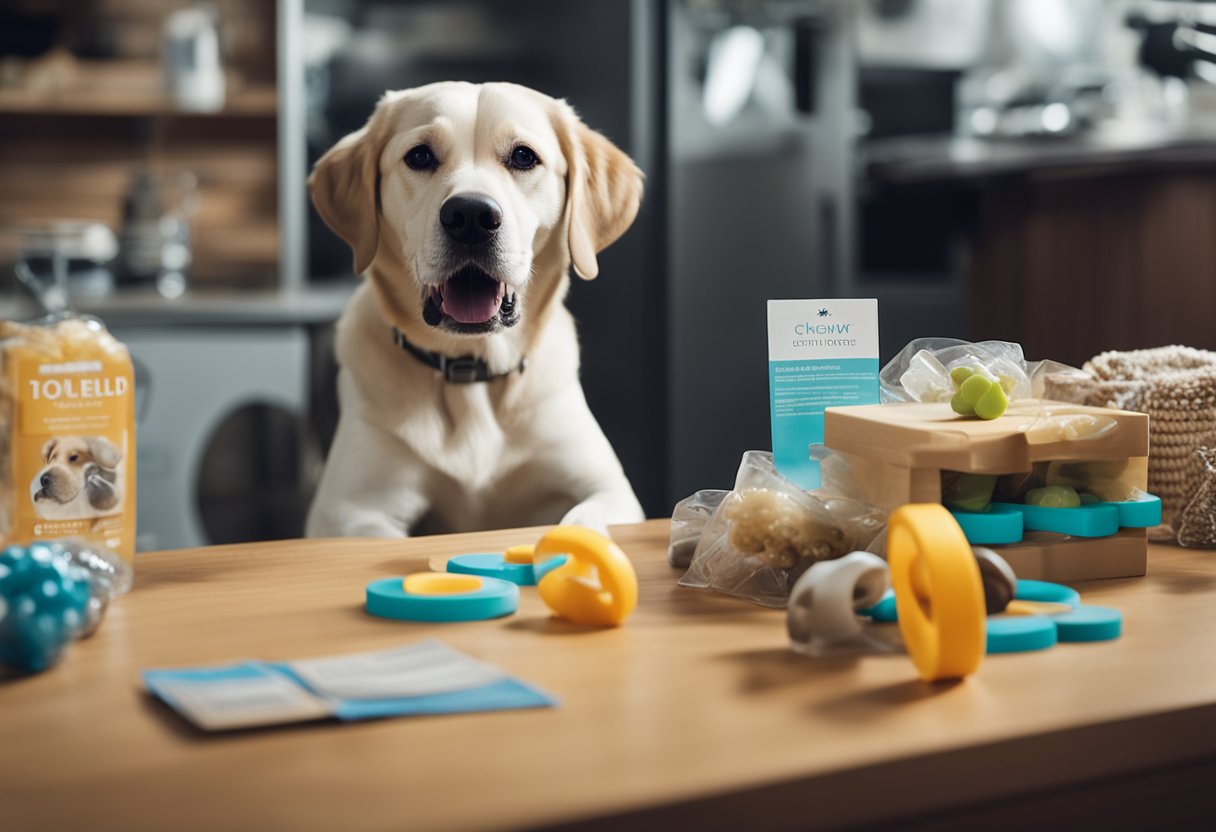Understanding Dewclaws
Dewclaws are often misunderstood appendages on a dog’s paw, yet they serve specific functions related to grip and motion, and vary among breeds.

Dewclaw Anatomy
The dewclaw is a small digit located higher on the leg, typically on the inside of a dog’s paw, resembling a thumb. Its anatomy includes bones and tendons that attach to other parts of the dog’s leg. Some breeds may possess dewclaws on their hind legs as well as the front, or even have double dewclaws.
Dewclaw Functions
Dewclaws play a role in gripping objects when dogs chew or handle them. They can aid in providing traction when dogs run or turn quickly, acting as stabilizers. Especially in certain terrains, the dewclaw helps to prevent twisting injuries by balancing the weight and motion.
Breed-Specific Dewclaw Traits
Certain breeds are known for their distinct dewclaw traits. The Great Pyrenees, for example, often has double dewclaws on the hind legs, which is a breed characteristic that is included in their breed standard. Similarly, the Briard and Beauceron have this feature, and it is considered essential to maintain it for authenticity. The Icelandic Sheepdog possesses strong dewclaws that assist in navigating the rugged Icelandic terrain. A veterinarian might advise against removing dewclaws in these breeds, given their functional importance.
Common Issues with Dewclaws

Dewclaws can cause complications for dogs, including injuries, infections, and diseases. These issues may lead to discomfort or require intervention from a vet.
Injury Prone Nature of Dewclaws
Dewclaws, the first digit on a dog’s front legs, are susceptible to injuries because they are less protected and often stick out from the leg. Injuries can range from minor abrasions to severe cases such as fractures. When a dog chews on its dewclaws, it may be an attempt to alleviate discomfort from an injury. Common injuries include tearing or breaking, which can cause pain and lead to limping. If an injury occurs, an X-ray might be necessary to assess the severity, and a vet may need to apply a bandage or even perform surgery depending on the damage.
Infection Risks and Signs
Dewclaws can be entry points for infection if the skin around them is broken or wounded. Signs of infection include pus, redness, swelling, and the dog may chew at the dewclaw due to the irritation. If an infection is suspected, a vet should examine the dewclaw to determine if antibiotics or other treatments are needed to prevent further complications.
Dewclaw Diseases
Dewclaws can also be affected by diseases such as tumors or cancer which might necessitate their removal. Bacterial infections, although less severe than cancer, still pose significant risks if left untreated. It is essential to monitor dewclaws for any abnormalities and consult with a vet if there are concerns about possible disease.
Behavioral Reasons for Chewing Dewclaws

Dogs often engage in chewing, licking, or biting at their dewclaws due to various behavioral triggers. Understanding these reasons can help prevent potential harm and ensure the wellbeing of the pet.
Stress and Anxiety as Triggers
Dogs may chew on their dewclaws as a response to stress or anxiety. This behavior is similar to nail-biting in humans and can be an outlet for emotional distress. Stressors such as separation anxiety or changes in their environment can lead to this compulsive grooming behavior.
Boredom and Lack of Stimulation
Boredom and a lack of mental and physical stimulation can also lead to a dog to gnaw on their dewclaws. Engaging activities and regular exercise are crucial for a dog’s mental health, and without them, they may turn to chewing their paws as a way to pass the time and stimulate their senses.
Response to Parasites or Allergies
Chewing or licking dewclaws might be a dog’s way of soothing irritation caused by fleas, parasites, or allergies. If the pet is persistently focusing on their dewclaws, it’s important to check for signs of these issues and seek veterinary care if necessary to address the underlying cause.
Medical Conditions Leading to Chewing

Dogs may chew on their dew claws due to underlying medical conditions that induce pain or discomfort. It’s essential to consider these medical triggers when addressing this behavior to ensure effective treatment and care.
Pain and Discomfort
When a dog is in pain, they may chew on their dew claws as a response to the discomfort. Conditions such as inflamed joints, arthritis, or injury to the paw can lead to constant licking and chewing. The presence of overgrown nails or other nail pathology can also cause significant discomfort, driving a dog to focus on their claws. Monitoring for signs of swelling, redness, or tenderness near the dew claws is important for timely intervention.
Post-Surgical Behavior
Post-operative behaviors often include chewing at the site of surgery, as seen in dogs that have undergone procedures like spaying or neutering. The use of a cone or E-collar is a common preventative measure to protect the surgical area from chewing during the healing process. Discomfort from the operation or itchiness associated with the healing tissue can lead dogs to chew at their paws, especially if they cannot reach the actual surgical site due to the cone. Additionally, the effects of anesthesia may cause confusion or restlessness, which can manifest as chewing or licking at their dew claws.
Preventive Measures and Solutions

It’s essential to understand that preventing dogs from chewing on their dew claws can be managed through proper grooming, addressing any health concerns, and employing behavioral strategies. These targeted actions can help mitigate the problem effectively.
Proper Grooming and Nail Care
Regular grooming is crucial in preventing a dog from chewing on its dew claws. Nail trimming should be part of the dog’s routine care to avoid overgrowth that can lead to discomfort and subsequent chewing. If the dewclaw grows too long, it can curve and become embedded in the dog’s paw, causing an injury or infection. It is advisable for a professional vet or experienced groomer to handle the trimming to prevent cutting into the nail bed, which can cause pain and bleeding.
Addressing Underlying Health Issues
If a dog persistently chews on its dew claws, it may be indicative of an underlying health issue such as a skin infection or an injury to the nail bed. It’s important to consult with a veterinarian to rule out or treat any medical conditions that could be causing the behavior. Conditions like disease or infection can cause discomfort, and resolving these health issues can eliminate the dog’s need to chew for relief.
Behavioral Modification Strategies
Chewing on dew claws can sometimes be a result of anxiety or stress. Offering suitable toys can redirect the behavior and provide a positive outlet for a dog’s chewing instinct. Behavioral modification strategies such as providing ample exercise and mental stimulation are also effective. Dewclaw removal is a more drastic measure and should only be considered when recommended by a vet, especially if injury and chronic problems persist.
Dewclaw Removal Considerations
Dewclaw removal in dogs is a procedure with specific benefits and concerns that should be carefully considered. The process involves surgical amputation and can impact a dog’s long-term welfare, particularly around activities such as agility or navigating slippery surfaces.
Pros and Cons of Dewclaw Removal
Pros:
- Reduces the risk of dewclaw injuries: Dewclaws can easily get snagged on carpets, underbrush, or during vigorous play, leading to painful wounds.
- Often a breed standard requirement: Certain breeds, such as the Great Pyrenees, Briard, and Icelandic Sheepdog, may have dewclaw removal as part of the breed standard.
Cons:
- Loss of functional grip: On slippery surfaces, dewclaws provide additional traction when dogs run or make sharp turns.
- Potential behavioral issues: Dogs use their dewclaws for additional stability during activities. Without them, some dogs may experience reduced confidence in their movements.
Surgical Procedure and Aftercare
- Amputation: The procedure involves the removal of the dog’s dewclaws under anesthesia, performed by a veterinarian.
- Healing: After surgery, dogs require careful aftercare, including bandage changes and wound monitoring to prevent infection and ensure proper healing.
Ethical and Breed-Specific Discussions
- Ethical considerations: The necessity and ethics of dewclaw removal are debated, with some viewing it as an unnecessary surgery unless medically justified.
- Breed-specific roles: For certain working dogs involved in dog sports or fieldwork, keeping their dewclaws may be advantageous for performance and safety.
Frequently Asked Questions
This section addresses common inquiries about canine behavior regarding their dew claws and provides guidance on care and management.
What causes a dog to bite its nails?
A dog may bite its nails due to discomfort, itchiness, or anxiety. Overgrown nails can cause pain, prompting a dog to chew on them to find relief. Behavioral insights on dogs can further explain why dogs engage in this activity.
How can I safely trim my dog’s dew claws?
Safely trimming a dog’s dew claws requires a proper nail clipper and an understanding of where the quick of the nail is, which contains blood vessels and nerves. It’s important to trim just the tips to avoid bleeding. For a detailed guideline, veterinary manuals on dog care can be consulted.
What should I do if my dog’s dew claw is infected?
If a dog’s dew claw is infected, it should be seen by a veterinarian. In the meantime, keeping the area clean and preventing the dog from licking or chewing it can help. Signs of infection include redness, swelling, and discharge.
Is it common for dogs to gnaw on their paws and nails?
Yes, it is common for dogs to gnaw on their paws and nails, and it can be due to various reasons, including grooming habits or to ease discomfort. However, excessive gnawing may indicate a problem that needs attention.
How can I prevent my dog from injuring its dew claw?
To prevent injury, keep your dog’s dew claws trimmed, provide appropriate chew toys, and inspect their paws regularly for signs of injury or discomfort. Exercise and mental stimulation can also reduce the likelihood of compulsive behaviors.
Is dew claw removal necessary for dogs?
Dew claw removal is not always necessary for dogs; it is typically performed for certain breeds or in cases where the dew claws present a high risk of injury. Owners should consider the dew claw removal in dogs only in consultation with a veterinarian.
